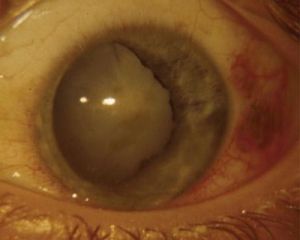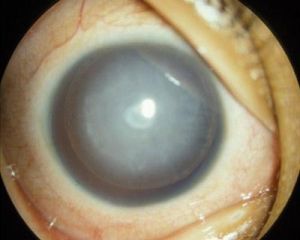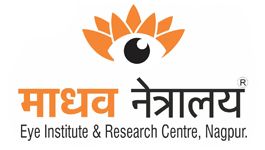A paediatric cataract is one of the leading causes of childhood blindness. Untreated cataracts in children lead to tremendous social, economic, and emotional burdens to the child, family, and society. The Paediatric Ophthalmology Department at Madhav Netralaya is a top eye care hospital in Nagpur which is well equipped to handle your valuable child and give the best possible eye care. We have doctors specially trained in paediatric eye care to take care of your little one.
What is a Paediatric Cataract?
In adults, cataracts occur after the eyes and vision are developed and stable. Most adults can have good vision again after the cataracts are removed. In children, both eyes and Brain are at the developing stage. If the Brain doesn’t get good signals to develop eyesight from the beginning it can result in serious long-term effects on their vision.
Thus paediatric cataracts are always treated as an emergency. The sooner we treat the cataract; the faster and better will be the brain development to understand the vision. We call this as visual maturation. First two months are called a critical period of virion maturation. Early detection and prompt treatment can prevent permanent vision loss in children with cataracts.
Causes of Paediatric Cataracts in Children –

paediatric cataracts can be congenital (present at birth) or acquired (develop after birth) often caused due to a faulty gene passed to a child from their parents where the fault is that the lens does not grow properly that is due to genetic predisposition.
Congenital cataracts can also be caused due to infections caught by the mother during pregnancy where the main infections linked to an increased risk of these cataracts include Rubella, Toxoplasmosis, Cytomegalovirus, Chickenpox, Herpes Simplex Virus.
The Cataracts which are developed in the children after birth are called acquired cataracts. The causes of this type of cataracts include diabetes, eye trauma, toxocariasis, and galactosemia. But most of these causes are either rare or usually don’t cause cataracts to develop in children.
Types of Paediatric Cataract-
The human crystalline lens consists of three parts including a center part (nucleus), an outer part (cortex), and a capsule surrounding the cortex. Cloudiness can occur in one or more parts of the lens which discriminates the types of cataract
A lamellar cataract is cloudiness between the nuclear and cortical layers of the lens.
A nuclear cataract is a cloudiness of the center part of the lens.
A posterior subcapsular cataract is a thin layer of cloudiness that affects the back surface of the lens cortex, just inside the capsule. This type of cataract can often be associated with medication use such as steroids.
An anterior polar cataract is a small, usually central opacity of the front part of the lens capsule. Anterior polar cataracts generally do not grow during childhood and are typically not visually significant. They are often managed without surgery
A posterior polar cataract is a central opacity at the back of the lens.
Persistent fetal vasculature can be associated with paediatric cataracts. During the development of the eye, a blood vessel extends from the optic nerve (in the back of the eye) to the developing lens to provide nutrients to the young, growing lens. This blood vessel normally disappears before birth. If the blood vessels do not go away, it can result in a plaque-like cataract on the back of the lens. The persistent stalk extending from the back of the eye toward the cataract can cause retinal abnormalities as well. These particular cataracts are often more difficult to treat and have a worse prognosis because of the other associated eye abnormalities.
A traumatic cataract results from either a blunt or penetrating force that damages the lens. The cataract can form shortly after the trauma or months to years after the injury
Early Diagnosis and Swift Treatment
A cataract can prevent light from reaching the retina or cause light rays to scatter as they pass through the cloudiness. This distorts the retinal image.
For children, whose eyes and brain are still learning to see, distortion can lead to lazy eye(amblyopia). Without proper treatment, paediatric cataracts can cause abnormal connections between the brain and the eye. Once made, these connections are irreversible.
Most paediatric cataracts are detected when the child is examined at birth before they even leave the hospital. Many more are detected by pediatricians at well-baby exams and some are noticed by parents. They are often noticed as missing or irregular red reflex test on pediatric screening exams.
Acquired cataracts are most often diagnosed at vision screenings by the paediatrician or after an eye injury.
Treatment Takes a Long-Term Strategy

Treatment for pediatric cataracts can vary depending on the type and severity. Unlike adults with full-sized eyes, children require specialized surgical instrumentation and techniques. When performed by an experienced surgeon, cataract removal is generally safe. The most common risks include glaucoma, retinal detachment, infection and the need for more surgeries.
For most children, surgery is just the first step to rehabilitate the eyes. Ongoing treatment must repair eye-brain connections. This involves teaching the eyes how to focus properly.
After surgery, children often need some combination of contact lenses, intraocular lenses implanted in the eye or glasses. If amblyopia has developed, the child may need patching treatment. This treatment involves covering the stronger eye to stimulate vision in the weaker eye.
Children who receive timely treatment and follow-up have a good prognosis. Successful outcomes may require years of individualized visual rehabilitation. Frequent follow up is mandatory for every child undergoing cataract surgery.

